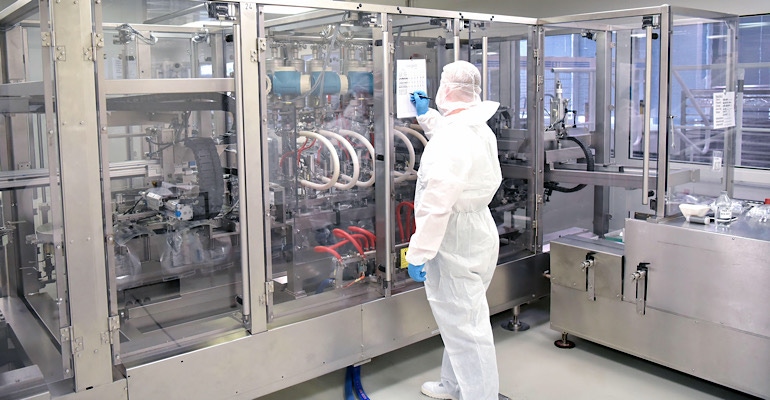DELMIAWorks' Louis Columbus gives tips on how to find and bring on top medical device manufacturing personnel on your team.
December 29, 2022

Despite economic uncertainty in some industries, the medical device sector is expected to continue growing at a healthy pace in 2023 and beyond, bringing with it a commensurate need for additional skilled workers. In the United States alone, Statista predicts medical device manufacturing revenue will achieve a five-year 5.14% compound annual growth rate (CAGR), leading to a market value of $199.1 billion by 2027. Meanwhile, the U.S. Bureau of Labor Statistics (BLS) projects that employment in the medical device manufacturing industry will continue to grow at a 5% rate through 2030 — faster than the average growth rate for all occupations the bureau tracks.
The statistics may be looking out over a few years, but companies are already seeing their business growth stunted today by a lack of skilled workers. In fact, a 2022 Deloitte and Manufacturing Institute study reveals that 45% of manufacturers have turned down opportunities due to a lack of workers.
The message is clear. To continue growing revenues and market share, medical device manufacturers must strengthen their ability to attract, nurture, and retain highly-skilled workers.
It’s a tall order. Not only do medical device manufacturers need to fill new positions; but many of these companies also have to replace an aging workforce in which employees are taking decades of experience and knowledge with them as they retire. And competition for talent is fierce. For example, Glassdoor lists 18,528 available medical device manufacturing jobs in the US today.
Jay Timmons, CEO of the National Association of Manufacturers, perhaps captured the challenge best in a recent CNN interview: "I think we're in uncharted territory. For every 100 job openings in the sector, we only have 60 people looking. I think it'll take quite a while to fill that pipeline."
Filling the pipeline of skilled workers will take a holistic, multifaceted strategy that considers both short-term and long-term needs.
Acquiring Top Talent
In the short term, many medical device manufacturers are turning to signing bonuses in their competition for highly skilled workers. For example, experienced production operators in medical products plastics injection modeling receive between $2,500 to $4,000 signing bonuses based on experience.
However, with the workforce pool shrinking as senior-level employees retire, manufacturers need to invest in cultivating the next generation of highly skilled workers. Five strategies in particular have proven effective over the years. They include initiatives to:
Raise visibility in the community about medical device manufacturing by sponsoring science, technology engineering, and mathematics (STEM) programs, and activities in local school districts.
Educate students on medical device innovations and modern manufacturing skills through sponsored career days, as well as hosted plant tours and training days.
Partner with high schools, colleges, and universities on offering apprenticeships that can lead to placements in entry-level positions for skilled workers.
Participate in or host job fairs periodically to engage with potential applicants. For example, one medical device manufacturer hosts a job fair every four months to share the latest job openings and what’s new in the production centers.
Develop a social media strategy to attract candidates. Social media platforms, such as Facebook, LinkedIn, Twitter, and TikTok, can be used to showcase compelling aspects of a medical device company, including smart manufacturing technologies, team achievements, and interesting customers, among others.
Retaining Strong Performers
Hand-in-hand with attracting new employees is establishing work environments and opportunities that encourage employee retention. Importantly, analysts who track employment trends and strategies advise that when all other factors are the same, workers will go to the company that offers the most money. So, to effectively retain top performers, medical device manufacturers have to invest in employees’ day-to-day experiences. Some of the most effective strategies include the following.
Train and upskill existing employees. The best way to fill open positions is to give workers opportunities to broaden their skills and advance their careers, providing a win/win for the company and employees. By providing ongoing training and development, company leaders can show they’re committed to their employees' career success now and in the future. Opportunities may include on-the-job training or financial support for earning advanced degrees and/or professional certifications. Alternatively, strong performers may be temporarily redeployed to other manufacturing plants to foster knowledge sharing and give these workers broader knowledge of the business.
Scheduling and location flexibility. By adjusting employee schedules to the hour, day, week, and shift level manufacturers can leverage the skills of employees with caretaker responsibilities for children or aging parents and maximize staff availability. Similarly, remote monitoring of production facilities can enable skilled technicians to manage multiple plants while working at the facility with the most convenient commute—and from home in the evening. This supports better work/life balances for employees while facilitating the ability to run lights-out or near-lights-out operations and reducing the need for 24/7 onsite staff.
Automated tasks. Medical device manufacturers should empower highly-skilled workers to do more in less time by automating rote tasks. Removing the burden of manually-intensive work not only improves employees’ experiences; it also ensures that the time and skills of experienced medical device manufacturing workers are better invested in getting machines built, tested, and shipped. Machinery and robots can handle or assist with physical tasks. Meanwhile, manufacturing execution systems (MES) and other software solutions can help to automate higher-level rote functions, such as production planning and scheduling.
Focus Investments on Most In-demand Positions
In an ideal world, medical device manufacturers would have the resources to implement all programs to attract and retain all workers. In reality, most companies will need to implement a tiered or staged program that focuses first on the business’ top performers, as well as candidates and employees in the most in-demand position. Today, four of the most in-demand positions include:
Quality control engineers and managers. These professionals are responsible for ensuring that medical devices meet the required standards for quality and safety, including testing, inspecting products, and documenting and reporting the results. Engineers with experience in device history records (DHR); compliance tracking; warranty and service tracking; and compliance with ISO 13485:2016, ISO 27001, and other standards have the most in-demand skills.
Manufacturing engineers. Manufacturing engineers' responsibilities are growing beyond designing and improving the processes used to manufacture medical devices to include full product lifecycle development from prototyping through finished products. Manufacturing engineers with experience trading off design goals, features and production costs are among the most sought-after today.
Research and development (R&D) professionals. On average, medical device manufacturers invest 7% of sales on R&D, according to Statista. And with concurrent design and development cycles aimed at reducing time to market for next-generation products, there’s an urgency to find skilled labor. These manufacturers are competing for biomedical engineering program graduates from leading universities to fill their R&D positions.
Compliance and regulatory experts. Reducing the risk of an audit by knowing how to turn compliance and regulatory reporting into a manufacturer’s strength is an invaluable skill. Skilled workers in the medical device industry who can turn compliance with standards, such as ISO 14971, and regulatory risk management into a competitive advantage are in high demand.
Continue Expanding Temporary Labor Pools
While investing in permanent employees, medical device manufacturers should also build a pool of highly skilled temporary workers. This can range from using temp agencies (Kelly, Volt, and others) to having short-term contracts in place with specialty labor suppliers.
Having a human resources (HR) professional manage the tasks is essential since they have visibility into talent and workload requirements internally and can balance those requirements against currently available skilled workers. Many medical device manufacturers are taking this approach to prioritize frontline recruitment, often finding skilled workers willing to work as part-time independent contractors HR already has the processes in place to complete interviews via web conferencing, handle online onboarding, and automate pre-employment checks.
Conclusion
Medical device manufacturers increasingly recognize the need to take a multifaceted approach to build teams of highly skilled workers. And medical device manufacturing chief human resource officers (CHROs) have noted the importance of combining upskilling their most valuable workers to assure greater retention while recruiting workers for new permanent and temporary roles. Moreover, providing a superior work environment cultivates employee satisfaction that contributes to a company’s reputation and recruitment efforts. In this way, medical device manufacturers can create a virtuous circle for ensuring that their workforce expansion keeps pace with business growth today and in the future.
Louis Columbus is currently serving as principal of DELMIAWorks. Previous positions include product management at Ingram Cloud, product marketing at iBASEt, Plex Systems, senior analyst at AMR Research (now Gartner), marketing and business development at Cincom Systems, Ingram Micro, a SaaS start-up and at hardware companies. He’s also a member of the Enterprise Irregulars. Professional experience includes marketing, product management, sales and industry analyst roles in the enterprise software and IT industries. Columbus’ academic background includes an MBA from Pepperdine University and completion of the Strategic Marketing Management and Digital Marketing Programs at the Stanford University Graduate School of Business. He teaches MBA courses in international business, global competitive strategies, international market research, and capstone courses in strategic planning and market research. Columbus has taught at California State University, Fullerton: University of California, Irvine; Marymount University, and Webster University.
About the Author(s)
You May Also Like




